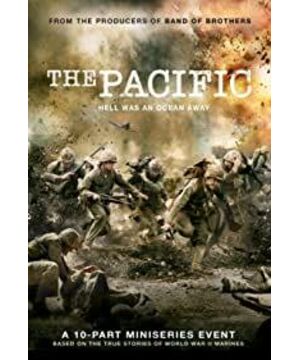The seeds of the Pacific War were planted as early as 1898. Japan, which won the Sino-Japanese War (called the Sino-Japanese War of Sino-Japanese War of Sino-Japanese War of Sino-Japanese War of Sino-Japanese War of Sino-Japanese War of Sino-Japanese War) won the victory, continued to expand substantially to the periphery, which in turn affected Russia, the United States, Britain, France, Germany, etc., which already had a place in the Pacific. In the interests of the side, Britain vigorously instigated Japan to go to war with Russia based on its own interests, and eventually defeated Russia to obtain its interests in northeast China. However, Japan’s expansion into the Pacific region was restricted by the United States. The United States occupied the Philippines and annexed the Kingdom of Hawaii through the Spanish-American War in 1898, which greatly stimulated the large number of immigration to Hawaii at that time, and its desire to annex Hawaii. Of Japan. After this, especially after the Russo-Japanese War, the development of the Japanese Navy has always regarded the United States as an imaginary enemy. After the end of the First World War, Japan occupied the German colony in the Pacific, the Caroline Islands, and was already adjacent to the US defensive circle in the Pacific. In terms of its attitude towards China, Japan has always dreamed of monopolizing China, while the United States has demanded a balance of interests. In 1937, Japan launched its war of aggression against China and gradually expanded its scale, which seriously threatened the interests of Western countries in China. At the same time, in order to dominate East Asia and contend for world hegemony, the Japanese ruling clique has long established a national policy of advancing north and south. In 1940, Germany invaded and occupied Western Europe. In the Far East, Britain, France, and the Netherlands were weak; the United States was busy supporting the War of Resistance against Germany and was unable to go east. Japanese militarism believes that this is a good opportunity to advance south. In the same year, the Cabinet of the Guards threw out the Greater East Asia Co-Prosperity Circle plan in an vain attempt to establish a Japanese colonial empire including China, North Korea, the entire East Asia region, and then Oceania. In September 1940, the "Treaty of the Alliance of Germany, Italy, and Japan" was signed in Berlin, which severely stimulated the United States, which had determined to support Britain and resist Germany at that time. Before and after the beginning of the Japan-US negotiations in April 1941, Japan successively occupied the entire Indochina, making it a strategic material supply base and a springboard for southward advancement. This further aggravated the contradictions between the United States and Japan. The United States, Britain and other countries strongly demanded Japan to withdraw its troops from China and stop its expansion. , And threatened Japan by restricting the export of scrap steel and oil, forcing Japan to submit. On October 18, 1941, the main combatant Hideki Tojo cabinet was established. On December 1st, the imperial meeting decided to go to war against the United States, Britain, and the Netherlands. In the early morning of the 8th (at 3:20 on the 8th, Japan time, and at 7:50 on the 7th, Hawaii time), the Japanese army under the command of Fifty-Six Yamamoto, commander of the Joint Fleet, attacked the United States’ largest naval and air base in the Pacific, Pearl Harbor in the Hawaiian Islands. . On the same day, the United States and Britain declared war on Japan, and the Pacific War broke out.
In the early days of the war (1941-1942)
At dawn on December 8, 1941, Japan dispatched about 360 aircraft and 55 warships, led by Tadaichi Nanyun, attacked the US warship and airport in Pearl Harbor twice in a row, sinking and wounding. 19 warships, including 8 battleships, destroyed or damaged more than 260 aircraft. The US military was caught off guard. Almost all the main forces of the Pacific Fleet were destroyed, and more than 3,000 people were killed or injured. At the same time, the Japanese Southern Army, commanded by Touichi Terauchi, had more than 400,000 soldiers, and they divided their troops into several routes to attack Hong Kong, Malaya, the Philippines, Indonesia and Myanmar.
On December 7, Japanese troops landed in Patani and Singora in Kota Bharu and southern Thailand in the northern part of the Malay Peninsula.
On December 25, the Japanese army occupied Hong Kong, and the atrocities lasted for three full days.
At the same time, Japan dispatched its No. 1 mobile unit with an aircraft carrier as its core to advance to the Indian Ocean, and successively sank a number of British ships such as the British Athletic God aircraft carrier, the Prince of Wales battleship, and the Battlecruiser Counterattack. The British Far East Fleet narrowed its sphere of influence to the western part of the Indian Ocean.
On February 15, 1942, the British commander in Singapore, Parcival, signed a letter of surrender, and Singapore abandoned the defense. On March 9, 1942, the Dutch forces in the Indonesian archipelago surrendered. On May 6, 1942, more than 70,000 US-Philippines coalition forces surrendered in Bataan, and the Philippines fell. On May 8, 1942, Myitkyina, an important town in northern Myanmar, fell. The Chinese Expeditionary Force and the British and Indian Army retreated, and Myanmar fell into the hands of the Japanese. The land transportation between China and its allies was completely cut off, and aid materials could only be obtained by air transport on the hump route.
The Japanese army also attacked some strategic islands in the central and southern Pacific Ocean by the allies, such as Guam, Wake Island, Bismarck Islands, New Britain Island, Papua New Guinea and other places, achieving the goal of establishing air force forward bases.
From May to June 1942, in order to cut off the ties between the United States and Australia, Japan successively attacked the Solomon Islands and Port Moresby. The Japanese Navy
To cover army operations, during the Coral Sea battle, the Japanese navy met with the U.S. forces, and the first naval battle between aircraft carriers broke out in human history. In the naval battle, Japan lost one light aircraft carrier and two other aircraft carriers were severely damaged, while the United States The Lexington aircraft carrier was lost and Yorktown was injured. The Japanese army failed to achieve its strategic goals, and the attack on Port Moresby was stopped.
Prior to this, in April 1942, the USS Hornet under the command of Lieutenant Admiral Halsey carried 16 B-25 "Mitchell" medium bombers to bomb Tokyo, Kobe and other places in Japan, although the losses were caused. Minimal, but it stimulates Japanese nerves. Japan believed that these planes came from Midway Island, so it hurriedly launched the Battle of Midway Island. In the meantime, the United States deciphered the Japanese army's code and had a clear understanding of the next goal of the Japanese army. During the Battle of Midway Island (June 5-6), the Japanese army was dispersed, underestimated the U.S. military, and command was chaotic. The U.S. succeeded in a surprise attack. Within five minutes, three elite aircraft carriers were lost and vitality was severely injured. The aircraft carrier "Flying Dragon" successfully damaged the USS "York City" aircraft carrier, but it was also sunk by the following carrier-based aircraft. In this battle, four aircraft carriers of the Japanese First Mobile Fleet were sunk, and another heavy cruiser was sunk, which was severely injured. At the same time, more than 300 aircraft of various types were lost, and more than 100 experienced aviation personnel were killed. The Battle of Midway Island was also a turning point in the Pacific War. From this point on, Japan shifted from a strategic offensive to a strategic stalemate.
Strategic stalemate (1942-1943)
On August 7, 1942, the US military began a partial counterattack, landing on Guadalcanal in the Solomon Islands, and launched a long-term battle. Around the battle for Guadalcanal Island, Japan and the United States have conducted more than 30 naval battles in six months, including six of the larger naval battles. The two sides lost 24 destroyers and more combat ships. The United States The navy killed about 3,300 people and injured about 2500; the Japanese navy suffered as high as 25,000 casualties.
In the ground operations on Guadalcanal, the U.S. military force reached 60,000 at its maximum, 1,592 killed and more than 4,200 injured. The Japanese army’s force on Guadalcanal was about 36,000, and about 14,000 died in battle. More than 9,000 people are unaccounted for, with a total of nearly 23,800 dead, and more than 1,000 people captured.
In the air battle for the air supremacy of Guadalcanal, the "Cactus Air Force" Marine Corps air force stationed in Guadalcanal alone had six fighter squadrons participating in the battle. Ten famous ace pilots emerged, especially those of the 121st Fighter Squadron. Captain Foss, shot down 26 solar planes between August 1942 and January 1943 and won the Congressional Medal. During the six months of air combat, 427 Japanese planes were shot down, and the US lost only 118 planes. Including those that were shot down by anti-aircraft fire, the Japanese lost a total of 892 aircraft and 2,362 pilots. The US military lost a total of about 250 aircraft.
In this protracted battle, the US military killed about 5,000 people, injured 6,700 people, lost 24 warships, 3 transport ships, and about 250 aircraft. The Japanese army killed about 50,000 people, lost 24 warships, 16 transport ships, and 892 aircraft (there are also reports that 600). The Japanese army not only suffered heavy losses in the navy and aviation, even the army that has never lost since the war, the most elite of the 2nd Division and other divisions also suffered huge losses, especially the losses of large Japanese warships, aircraft and skilled and trained pilots. , It is even more difficult for the Japanese to make up. At the end of the battle, the superiority of the Japanese army has disappeared, and the strategic posture of the two sides has also changed.-The defeat of the Japanese in the midway naval battle was a turning point in the Pacific battlefield in World War II, and the battle began to move towards Not conducive to Japan but conducive to the development of the United States, the Japanese military's strategic initiative gradually lost; and the Battle of Guadalcanal, the Japanese army not only failed to regain its strategic initiative, but its military strength was further weakened and eventually lost its strategic initiative. Fall into a passive situation. From then on, the Japanese army had to switch from a strategic offensive to a strategic defense, fortifying everywhere, passively at every step, until defeated. Through the Battle of Guadalcanal, the United States gradually improved its unfavorable strategic situation, won time to mobilize human and material resources, and created favorable conditions for the strategic offensive that will begin on the Pacific battlefield. The remnants of the Japanese army were forced to withdraw from the island in February 1943. After the Battle of Guadalcanal, the situation was relatively quiet. The US military only launched a limited offensive in the Pacific (such as the recapture of Attu Island in the Aleutian Islands in May 1943). Although the Japanese counterattacked, it was in vain. Because the code was deciphered, in April 1943, the commander of the Japanese Joint Fleet Fifty-Six Yamamoto was ambushed and killed by a US plane on his way to the front line of Bougainville for inspection.
Strategic counterattack (1943-1945)
In June 1943, the US Joint Chiefs of Staff formally issued an order to attack the Marshall Islands. From November 22 to 26, 1943, China, Britain and the United States met in Cairo and signed the "Cairo Declaration", confirming joint operations against Japan until Japan unconditionally surrendered.
In October 1943, in order to cooperate with the war situation in the Chinese battlefield and the Pacific region, the Sino-Indian communication line was reopened and the counterattack in northern Myanmar and western Yunnan was launched. By July 44, the Japanese army was completely driven out of northern Myanmar. A complete victory was achieved. This victory not only opened up the land line of communication between China and the allies, but also opened the prelude to the Allied counterattack against the Japanese in the Asian battlefield.
In November 1943, the U.S. Army launched the Battle of the Gilbert Islands (code-named "Operation Electric") and eventually occupied Tarawa and other islands. Although the losses were large, the U.S. Army gradually gained experience in amphibious landings and applied it to the subsequent events. In various battles.
From January to February 1944, the U.S. military continuously organized the "Flintlock" and "Marshals" operations and captured Kwajalein, Roy Island-Namur Island, and Eniwetok atolls for the next attack. The Mariana Islands created conditions. In combat, the US military had a huge leap in technical and tactical skills compared to the Battle of Tarawa. Especially the cooperation and coordination between the various services and arms involved in the war was a classic. At the same time, the US military summarized the famous "leapfrog" tactics.
In March 1944, the U.S. military decided to carry out operations to seize the Mariana Islands. The US military invested a total of more than 600 ships, including 15 aircraft carriers, 14 escort aircraft carriers, 7 battleships, 25 cruisers, 180 destroyers, and 35 submarines, including 2,000 aircraft, four divisions and one brigade of ground forces, 150,000. people. The campaign secret code is "grain requisitioner". On June 15, according to a predetermined plan, the US military organized an amphibious landing operation on Saipan. At the same time, the Japanese joint fleet dispatched a fleet headed by Lieutenant Harissaro Ozawa. There were 9 aircraft carriers (with a total of 439 carrier-based aircraft), 5 battleships, 14 cruisers and 31 destroyers.
On June 19, the fleets of both sides encountered in the western waters of Mariana, and a fierce naval battle broke out (the Japanese called this battle the "Mariana Battle" and the US military called the "Philippine Sea Battle"). The Japanese army invested all the capital ships of the combined fleet and most of the shore-based aviation forces. It was originally intended to reverse the situation in one fell swoop, but it ended in a disastrous defeat. Only 2 aircraft carriers, 2 battleships, and 1 cruiser were slightly injured by the US military. None of the warships sank, and 117 carrier-based aircraft were lost. The Japanese sunk 3 aircraft carriers, 2 oil tankers, 3 damaged aircraft carriers, 1 battleship, cruiser, and oil tanker. The loss of carrier-based aircraft was 404, accounting for 92% of all carrier-based aircraft; and the loss of shore-based aircraft was 247. , Almost the entire army was annihilated; in addition, 36 submarines dispatched by the Japanese army were also sunk 20. Although the combined fleet escaped the fate of being annihilated, the loss of aircraft and pilots could not be supplemented by the Japanese in a short period of time. After this battle, the Japanese army could say that the core force of its navy suffered a devastating blow. The superiority of the sea and air supremacy on the U.S. then completely fell into the hands of the US military. Since then, the Japanese fleet has lost air support for ocean operations, making the Japanese army more passive and difficult in future wars, and the US military has achieved strategic initiative and theater dominance. Domination in the air, able to calmly choose the target of the next offense, gained greater initiative.
During the three-month landing operation on the Mariana Islands, the U.S. forces successively captured Saipan, Guam, and Tinian Island, and basically wiped out more than 70,000 garrison troops on the three islands, leading to the Japanese troops in the Pacific. The strategic defensive situation on the U.S. has deteriorated severely. The "absolute defense circle" stipulated by the base camp is facing collapse due to the loss of the core area. It is a forward base for continuing to advance in the Central Pacific. The fall of the Mariana Islands greatly shocked Japan and aggravated the internal conflicts of its ruling class. Distrust and antipathy towards the Tojo Cabinet that launched the war rose. Under the huge domestic pressure, the Tojo Cabinet was in the middle of the battle. 'S step down.
On June 16, U.S. B-29 bombers took off from Chengdu, China, and bombed Kyushu, Japan. The war directly burned to the Japanese mainland. Such strategic bombing continued until the end of the war. Major Japanese cities except Kyoto and Nara were destroyed. A total of 8.5 million Japanese urban residents fled to the countryside, and the absenteeism rate of factory workers had reached 49% by July 1945. Japan’s wartime economy has reached the point of exhaustion—refining industry production has fallen by 83%; aircraft engine production has fallen by 75%; aircraft body production has fallen by 60%; electronic equipment production has fallen by 70%; more than 600 major military factories have not To blow up is to suffer severe damage.
On the Burmese battlefield, on January 7, 1944, the Japanese base camp issued the command of "Mainland Finger No. 1776" and issued the Imphal combat plan code-named "U" in an attempt to occupy Imphal and Koshma. Important land, and then control the entire East India region. The Japanese offensive mission was the 15th Army of the Burmese Front Army, commanded by Lieutenant General Mutaguchi Renya, known as the "Little Tojo", and had jurisdiction over the 15th, 31st, and 33rd divisions. The British garrisoned in areas such as Imphal and Koshma were the 14th Army under the command of General Slim, under its jurisdiction the 4th, 15th and 33rd Army. Due to poor logistics, the Japanese offensive failed completely. At the beginning of the offensive, there were about 100,000 people. As a result, more than 53,000 people were killed or missing in the battle, and more than 20,000 were injured. The Japanese army was defeated and returned to the original offensive. As the main force of the Japanese-Burmese Front Army, the 15th Army no longer possesses the combat
power of a combat corps . The Allied forces in the India-Burma battlefield have since turned into a strategic counteroffensive.
In July 1944, two US commanders in the Pacific region respectively proposed their own plans. MacArthur proposed to attack the Philippines first and then Okinawa, Japan, while Nimitz proposed to attack Taiwan first and land on the eastern coast of China. From a military perspective, Nimitz’s proposal is more reasonable. But MacArthur put forward political reasons. To bypass the Philippines would be tantamount to acknowledging the rumors spread by Japan that the United States had abandoned the Philippines and was unwilling to sacrifice the lives of American soldiers to rescue the Filipino people. This would have an impact on the reputation and influence of the United States in the Far East. It is extremely unfavorable. And persuaded President Roosevelt to implement the Philippine campaign. The U.S. Army’s ground forces have successively invested in the U.S. 6th Army, the 8th Army, and the Australian 1st Army; the Navy has the US 3rd Fleet and the 7th Fleet, including 16 large aircraft carriers, 18 escort aircraft carriers, 12 battleships, and heavy cruisers. There are more than 800 combat ships including 11 ships, 15 light cruisers, 144 destroyers and 25 frigates, and about 1,700 carrier-based aircraft. The aviation force includes the US 5th and 13th Air Force and the Australian Air Force, and 1,000 aircraft. More frame. The landing operation command was in charge of MacArthur, and the sea support was in charge of Nimitz's Pacific Fleet.
The Japanese side responded with the "Jie No. 1" combat plan. The 14th Army of the Army was formed in the Philippines. The army general nicknamed the "Malay Tiger" was commanded by the commander of the army. It has nine infantry divisions, one armored division and Four independent mixed brigades with a total of about 350,000 people; the Navy organized all remaining warships into four fleets and put them into operation; the aviation in the Philippines includes the 1st Air Fleet of the Naval Air Force and the 4th Air Force of the Army. Among them, the 1st Air Fleet was completely lost in the just-concluded Mariana Sea Battle, and it is being rebuilt by Lieutenant General Teraoka Jinhei as the commander. It is stationed in the Philippines with about 250 aircraft; the 4th Air Force commander is Lieutenant General Tominaga. Since June, they have successively transferred from Northeast China to the Philippines. As of the beginning of October, about 300 aircraft have arrived in the Philippines, with a total of about 550 combat aircraft. Taking into account that the aviation force in the Philippines is still relatively weak, the base camp decided to deploy aircraft support from Japan, mainland China, and Taiwan once the battle begins.
In September 1944, the battle started. The U.S. forces first captured the islands of Peleliu and Morotai, eliminating the flank threat. From September to October, the US military dispatched a large number of shore-based aircraft and naval carrier-based aircraft to carry out large-scale air raids on Japanese airports in the Ryukyu Islands, Luzon Island, Taiwan and other places. In particular, the consecutive air strikes from October 6 to October 14 caused the Japanese to lose 1,093 aircraft. In the Philippines, there were only 200 aircraft left in the 4th Air Force of the Army, 35 aircraft in the 1st Air Fleet of the Navy, and the 2nd in Taiwan. There are 230 aircraft remaining in the aviation fleet. Before the battle started, the Japanese army had lost its counterattack power in the air. Only 102 planes of the US military were destroyed or shot down.
On October 20, the U.S. Army landed on Wright Island. In the afternoon of the same day, MacArthur was accompanied by President Austin of the Philippines. He came ashore with knee-length seawater. On the beach at 14 o'clock, MacArthur made a famous announcement to the world through high-power radio. "I'm back" speech.
On the 18th before this, the Japanese Joint Fleet had convicted the U.S. military's intention. The Commander of the Joint Fleet, Toyota, immediately ordered the implementation of the "Jet One" plan. From October 23 to October 26, the world’s largest naval battle-the Battle of Wright Bay, broke out from October 23 to October 26.
The U.S. forces involved in this big battle were as many as 16 aircraft carriers, 18 escort aircraft carriers, 12 battleships, 11 heavy cruisers, 15 light cruisers, 144 destroyers, 25 frigates, 592 transport and logistics auxiliary ships, and nearly 2,000 aircraft. shelf. In the battle, 1 aircraft carrier was sunk, 2 escort aircraft carriers, 2 destroyers, and 1 frigate; 4 escort aircraft carriers, 2 destroyers, 3 frigates, and 1 submarine were injured; 162 aircraft were lost, and casualties Less than three thousand.
The strength of the Japanese forces participating in the war can be said to be all. There are 4 aircraft carriers, 2 aviation battleships, 7 battleships, 14 heavy cruisers, 7 light cruisers, 32 destroyers, and about 600 aircraft. In the battle, 4 aircraft carriers, 3 battleships, 6 heavy cruisers, 4 light cruisers, and 10 destroyers were sunk; 1 air battleship was damaged, 4 battleships, 3 heavy cruisers, and 2 light cruisers. There were 3 destroyers; 2,88 aircraft were lost, and more than 10,000 casualties were made.
After this naval battle, the Japanese navy almost lost its ocean-going combat capabilities, and it also lost battlefield control of the sea, thus leaving the 14th Front Army on the land in a predicament of isolation and helplessness.
In January 1945, the U.S. Army landed in Rengain Bay, northwest of Luzon Island. The Japanese army used the Kamikaze Special Forces to carry out suicide attacks on the U.S. landing fleet for the first time when fighting the landing. The U.S. Army occupied Manila on March 4. In the subsequent operations, the 14th Front of the Japanese Army was annihilated in the Philippines, and the Japanese suffered 450,000 casualties and captured them. In the entire Philippine campaign, the Japanese lost 68 warships, including 4 aircraft carriers, 3 battleships, 6 heavy cruisers, 4 light cruisers, and 13 destroyers; 42 transport ships, about 170,000 tons, and more than 7,000 aircraft were lost. Among them, 700 suicide planes of the "Kamikaze". The US military suffered 62,000 casualties and lost 17 warships, including 1 aircraft carrier, 3 escort aircraft carriers, 9 destroyers, 1 frigate, 2 tank landing ships and 1 minesweeper; loss of 6 transport ships, about 60,000 tons , More than 900 aircraft. Dozens of ships were injured.
From March to June of the same year, the US military occupied Iwo Jima and Okinawa after paying a heavy price, and approached the Japanese mainland. In May, Germany surrendered unconditionally. In order to preserve the mainland and North Korea, Japan has carried out an unprecedented war mobilization, screaming "local decisive battle." The United States also plans to organize amphibious landing operations in the southern part of Kyushu Island and the Kanto Plain in Japan, codenamed "Olympics" and "Crown".
On July 26, the heads of governments of China, the United States and Britain issued the "Potsdam Proclamation", urging Japan to surrender unconditionally. Japan refused to accept it. On August 6 and 9 the United States dropped its only two atomic bombs on Hiroshima and Nagasaki, causing heavy casualties of approximately 200,000 people.
On August 8, the Soviet Union declared war on Japan and dispatched 1.57 million troops, more than 3,400 aircraft, and more than 5,500 tanks to advance to Northeast China in three separate ways. On the 9th, the Soviet Army launched a general attack on the Japanese Kwantung Army. At the same time marched into the southern part of Sakhalin and the Kuril Islands. On the 10th, the Mongolian People’s Republic declared war on Japan. At the same time, all the anti-Japanese armed forces on the Chinese battlefield began to launch a full-scale counterattack against the Japanese army.
On August 10, the Japanese government decided to accept the "Potsdam Proclamation" after a long discussion and the Emperor Hirohito's decision, and notified the allies through Switzerland, Sweden and other neutral countries.
At 11 noon on August 15, the emperor's jade sound was broadcast, and Japan declared its unconditional surrender.
The signing ceremony was held on the USS Missouri on September 2. MacArthur represented the Allies, Japanese Foreign Minister Shigemitsu Aoi on behalf of the Japanese government, and Umezu Meijiro signed the surrender letter on behalf of the Japanese base camp. The United States, China, and the United Kingdom signed the surrender together. , Su and other 11 countries.
The countries of the anti-fascist coalition won the final victory in the Pacific War.
View more about The Pacific reviews











